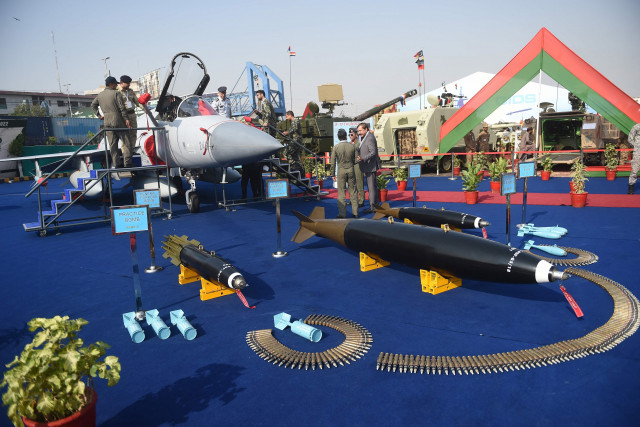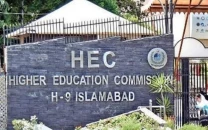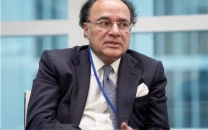Pakistan plans JF-17 third generation production
Fighter jet was part of PAF fleet that downed two Indian aircraft in Feb 2019

Pakistan has initiated work to introduce the third version of the fighter jet JF-17 Thunder which was part of Pakistan Air Force's (PAF) fleet that downed two Indian aircraft in retaliation to New Delhi's aggression in February 2019.
The country has put the second version of the aircraft on display in the ongoing four-day (November 15-18) International Defence Exhibition and Seminar (IDEAS 2022) at Expo Centre in Karachi.
The fighter jets demonstrated their capability and enabled PAF’s pilots to demonstrate their professionalism in February 2019.
"PAF pilots flying JF-17 Thunder downed two Indian aircraft and caught Indian Air Force (IAF) pilot Abhinandan (Varthaman)," an official of Pakistan Aeronautical Complex Kamra-Pakistan recalled while throwing light on key features of the fighter jet.
Pakistan invented the jet in collaboration with China and inducted it into the PAF in 2007. It was first upgraded in 2015.
"Further upgradation is in progress," the official added.
Tanks upgraded to fire missile
Pakistan has showcased its latest battle tank called Haider, "which is capable of firing a laser-guided missile with an effective hitting target range of 5 kilometres," said an official of Heavy Industries Taxila at its stall setup at IDEAS 2022.
"This is the most advanced battle tank introduced after the Al-Khalid tank."
Haider was introduced in the recent past and inducted into the Pakistan Army fleet. "This has improved the capability of Pakistani forces on battlefields," he said.
The tank is also capable of going into hiding by generating smoke when it senses a counterthreat. This is an auto gear tank with the steering to move it right and left, replacing the old technology of sticks to do so, he said.
Warfare system
Global Industrial and Defence Solutions (GIDS) officials said they have invented the Integrated Electronic Warfare System which helps forces to sense, protect and communicate within a radius of 30-35 kilometres.
"We have produced the system at the one-fourth cost against what Pakistan used to pay to import it earlier," a GIDS official said.
The communication system works on radio signals. It improves the capabilities of the forces in combating against enemy's aggression.
Bomb disposal robot
National Radio Telecommunication Corporation (NRTC) has introduced robots having the capability to defuse bombs on the battlefields.
The robot is part of an EOD (explosive ordinance device) vehicle, which also carries other equipment to defuse bombs including bomb disposal suits for army personnel.
Anti-ship cruise missile
GIDS has also launched its first indigenous anti-ship cruise missile Harbah-NG for exports.
It is an all-weather, ship-launched Subsonic Anti-Ship Cruise Missile with a range of 290km that can target enemy ships and land-based installations.
It has been designed to maintain a low‐altitude, terrain‐following flight profile which makes it capable of successfully evading the enemy’s countermeasures during the operational mode. It is offered in both air and ground-launched variants.
The recent launch has enlisted Pakistan among those few countries which are capable of selling cruise missile technology in the international market.
IDEAS brings together international manufacturers and suppliers of products and services to explore opportunities for cooperation in the field of defence production through joint ventures, outsourcing, and collaboration.
Over a period of time, IDEAS has turned out to be the region’s major platform for the promotion of defence systems as it exhibits a wide variety of products, ranging from equipment used in third-world countries to the most sophisticated technology from the west.
IDEAS 2022 has surpassed all previous milestones in terms of space, booking, exhibitors and delegates both domestic and foreign.
Karachi Expo Centre has been booked to its capacity with more than 500 exhibitors from Turkey, China, North America, South America, Europe, Asia and the Far East of which 60% are international and 40% local.
Besides trade visitors, more than 285 high-level delegates from 64 countries are visiting the exhibition.



















COMMENTS
Comments are moderated and generally will be posted if they are on-topic and not abusive.
For more information, please see our Comments FAQ